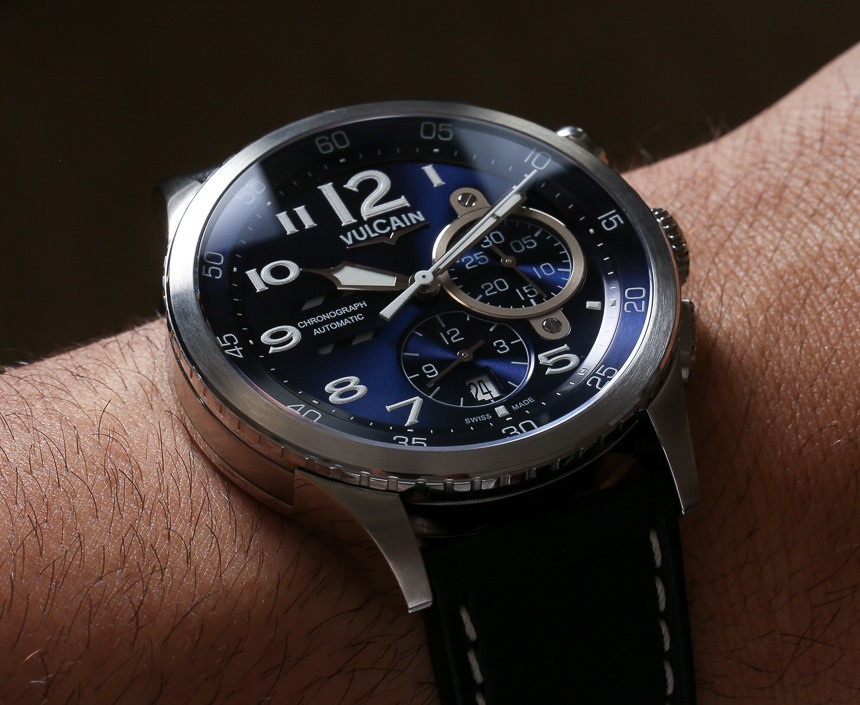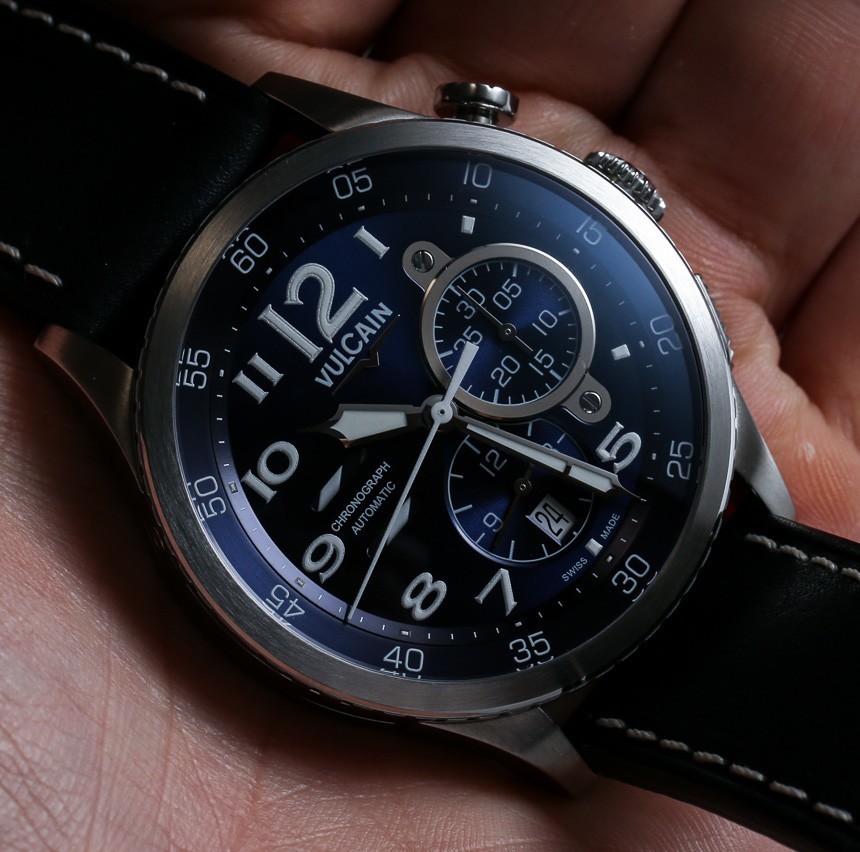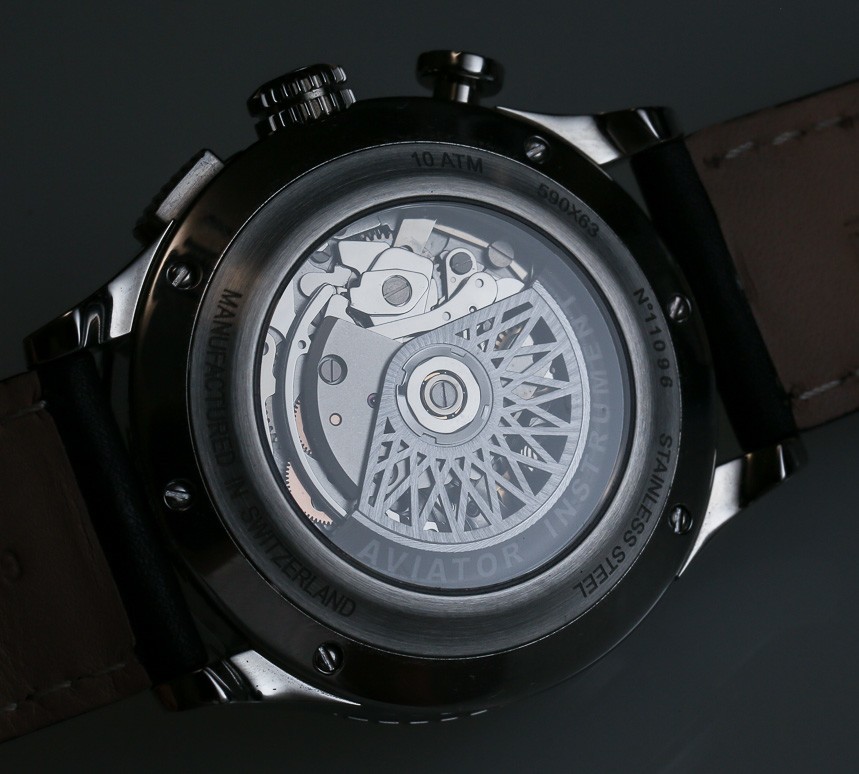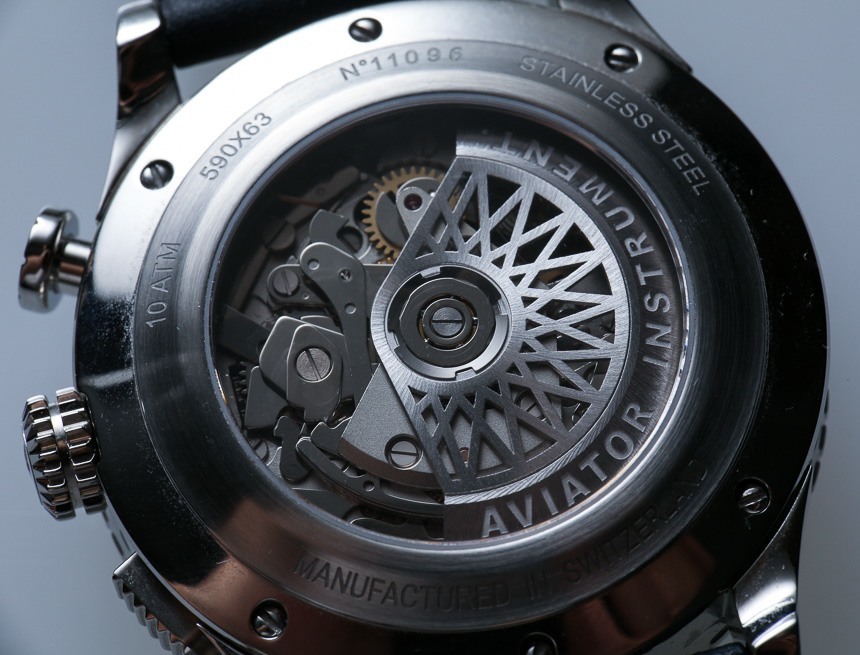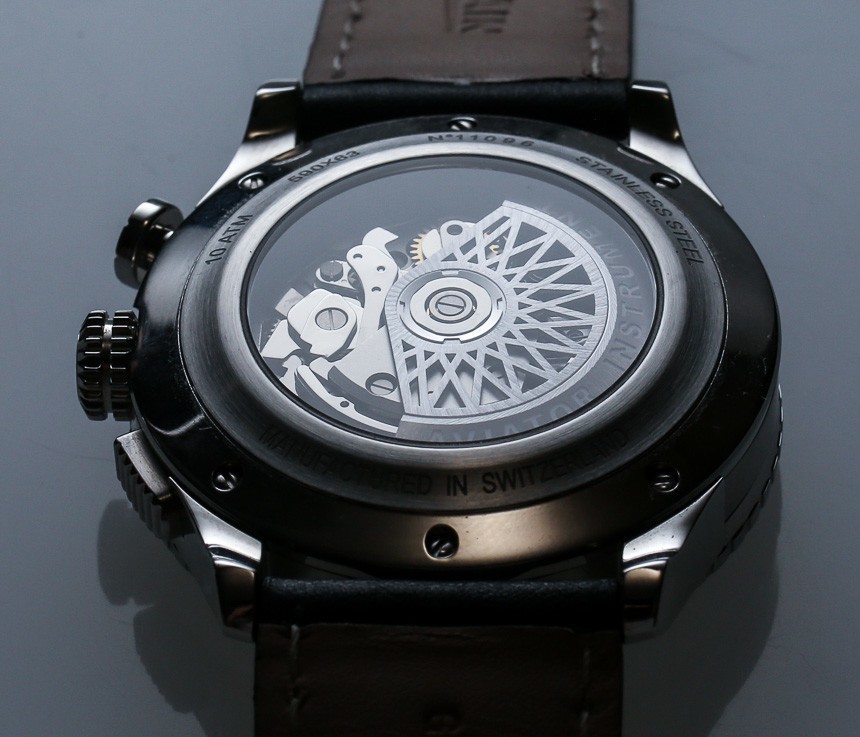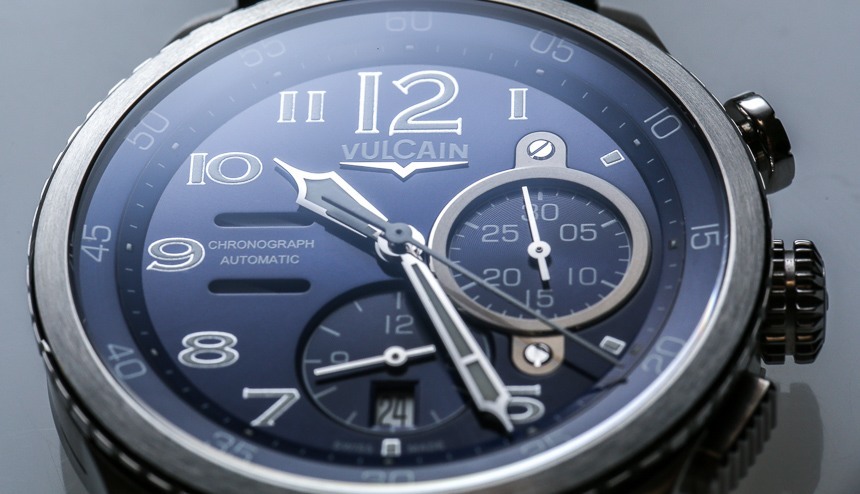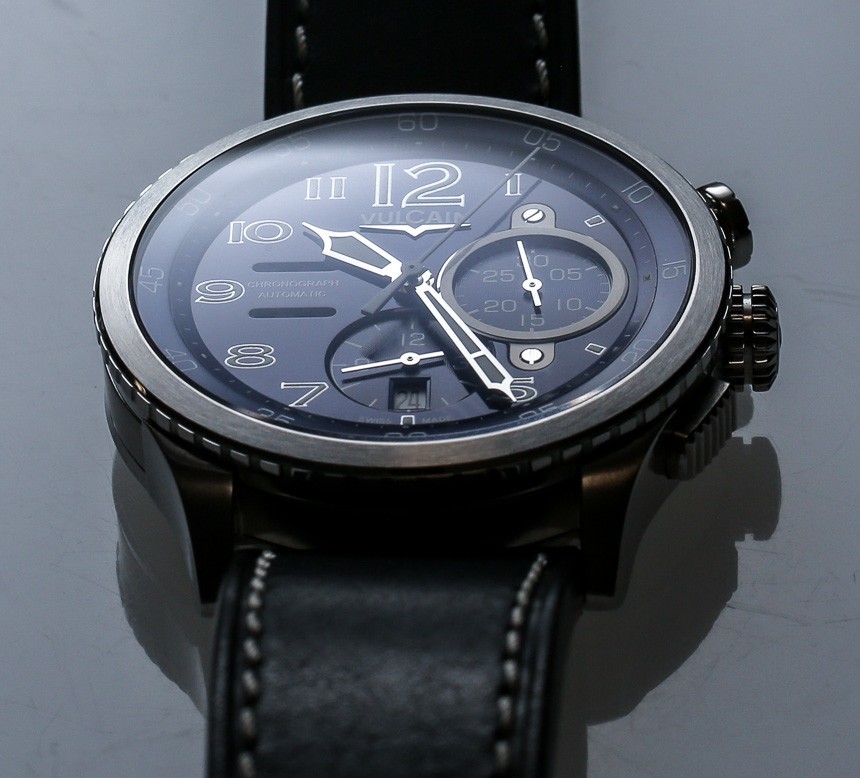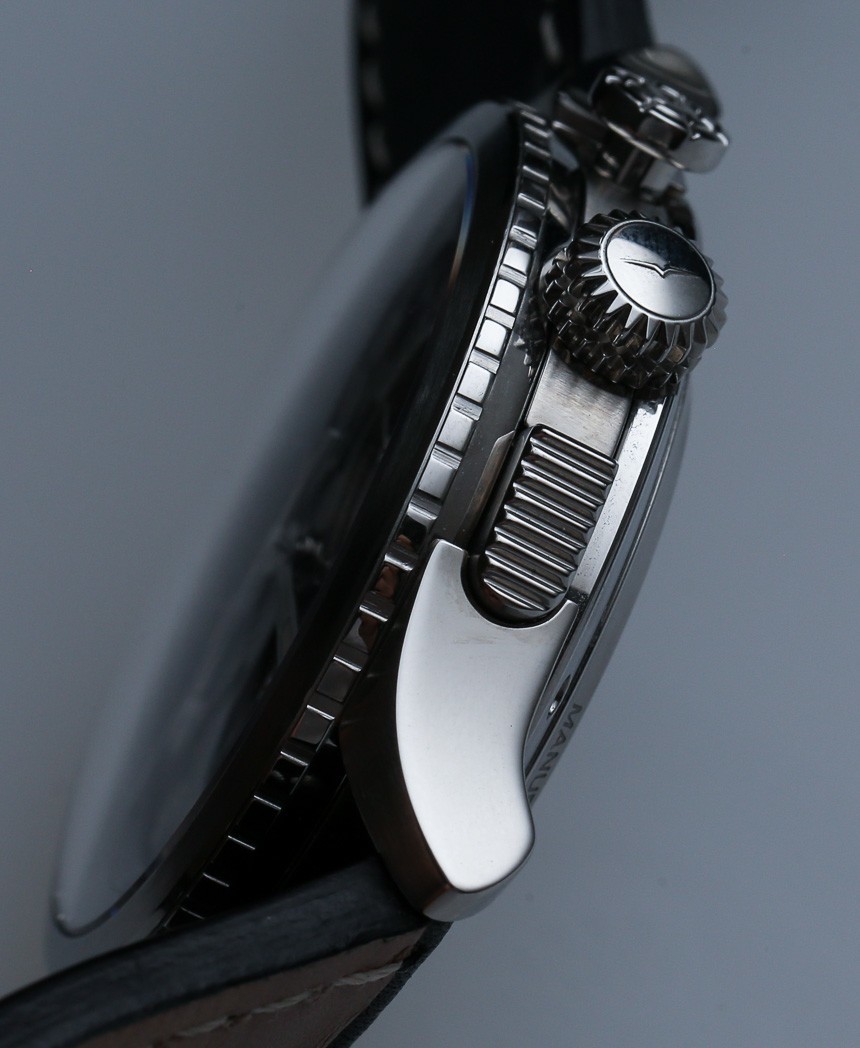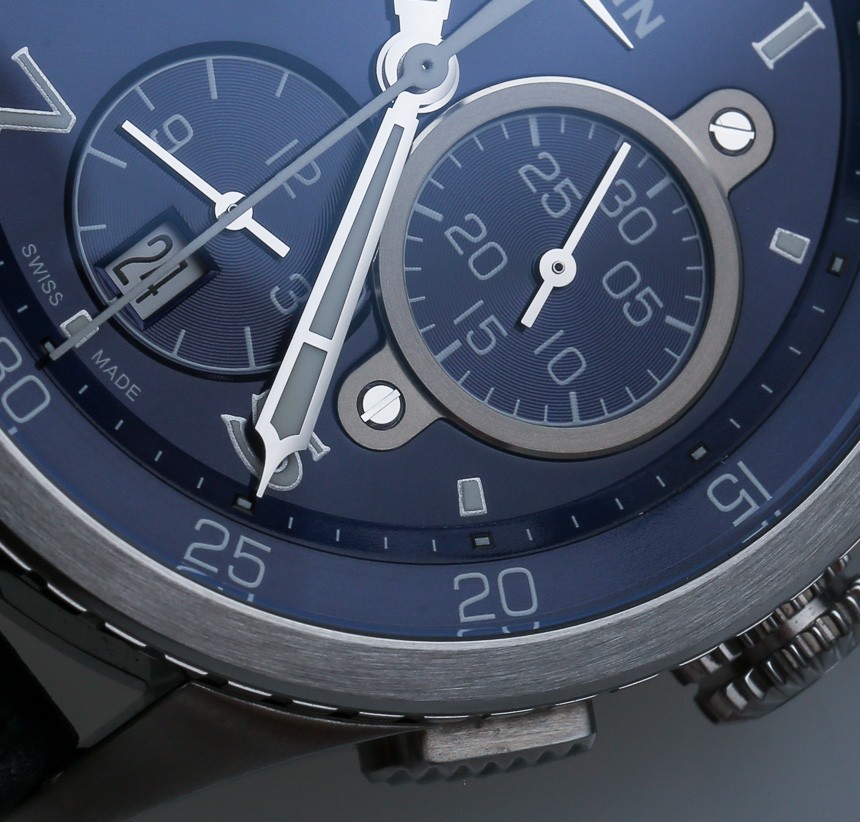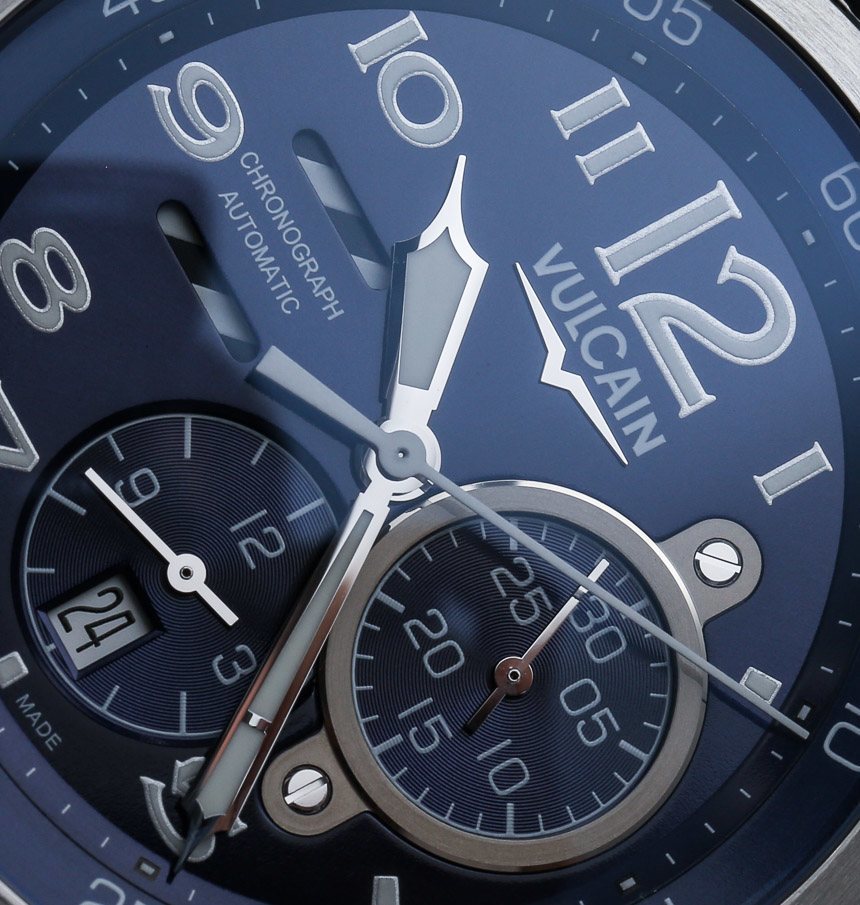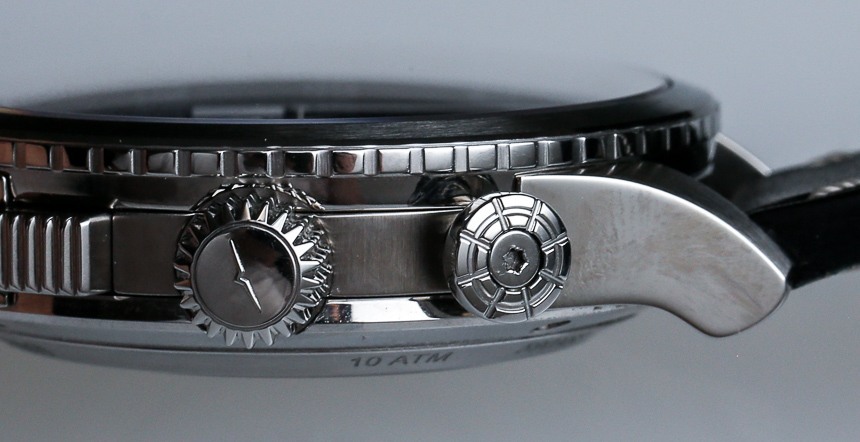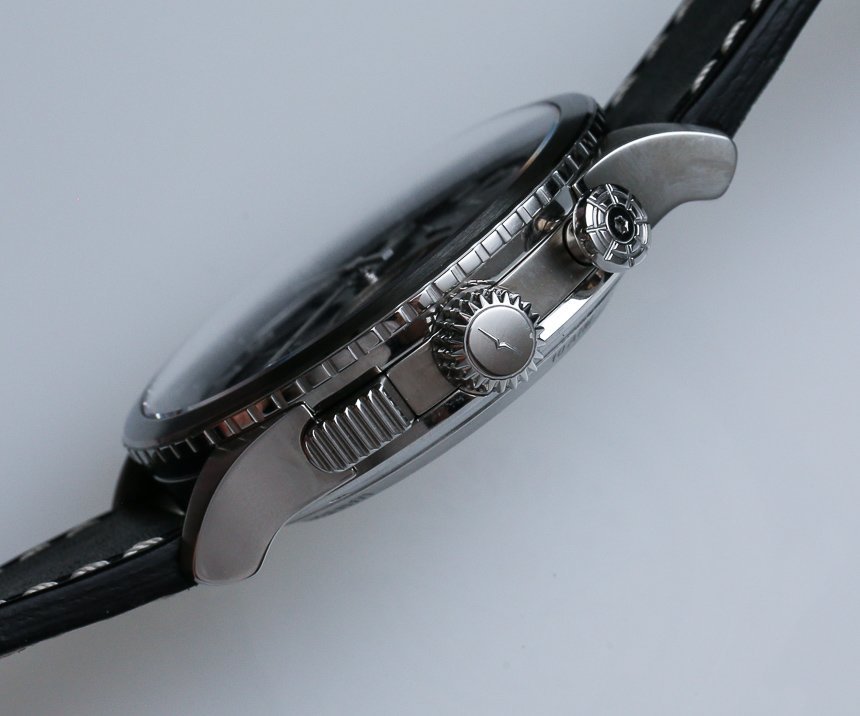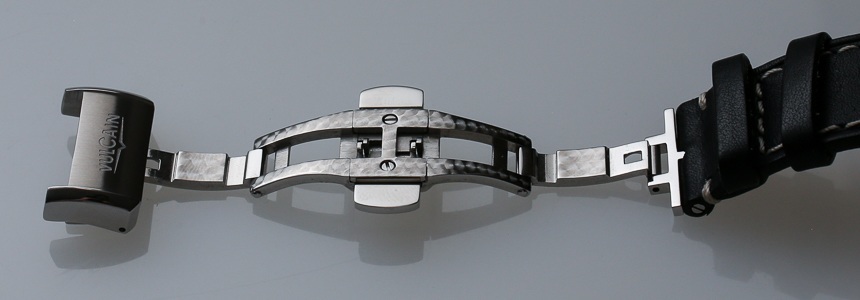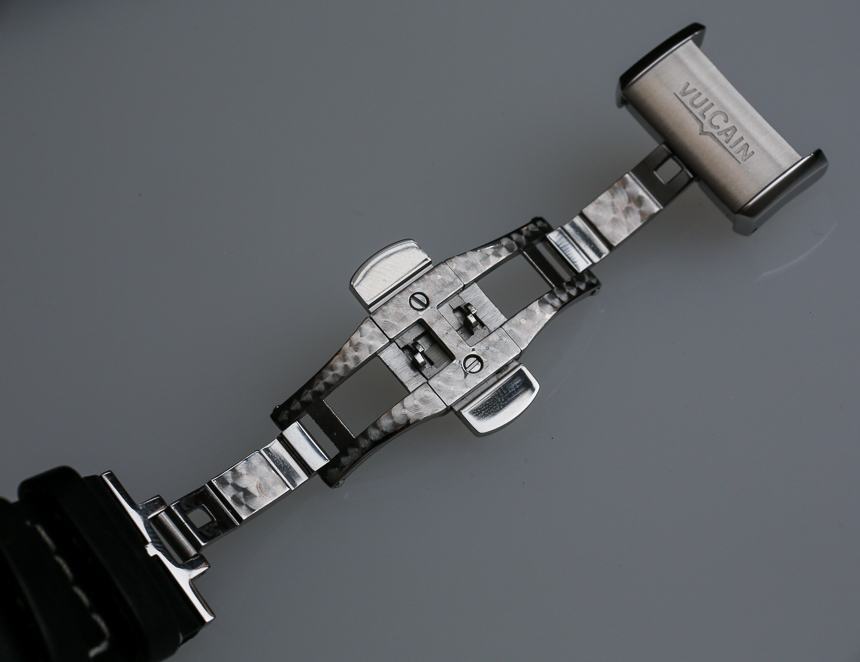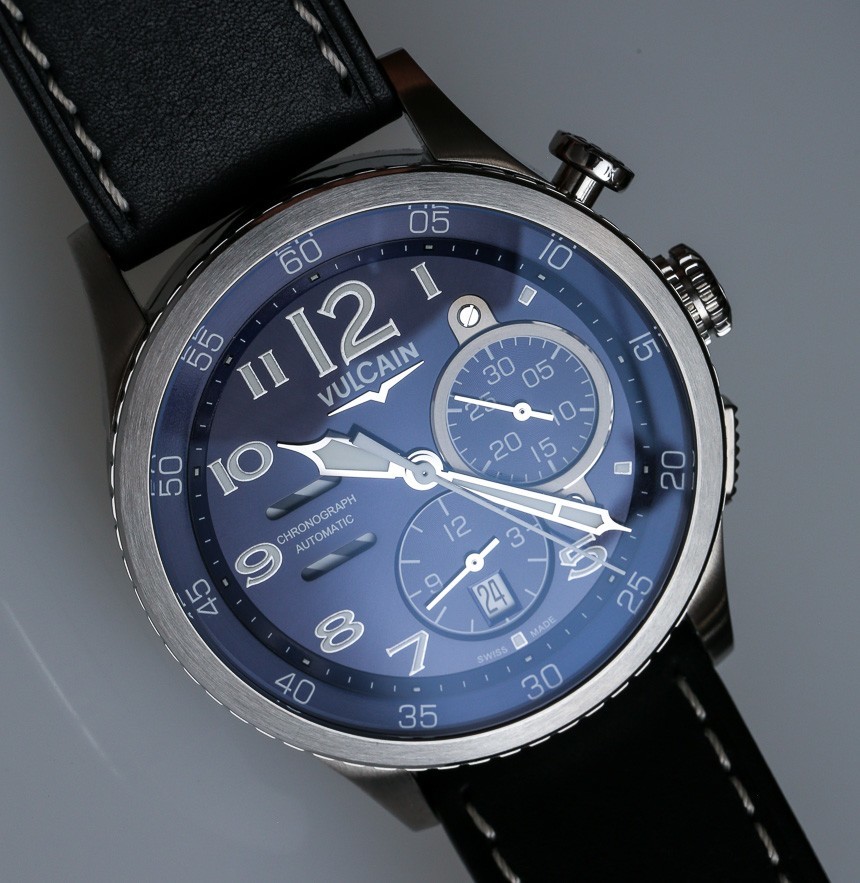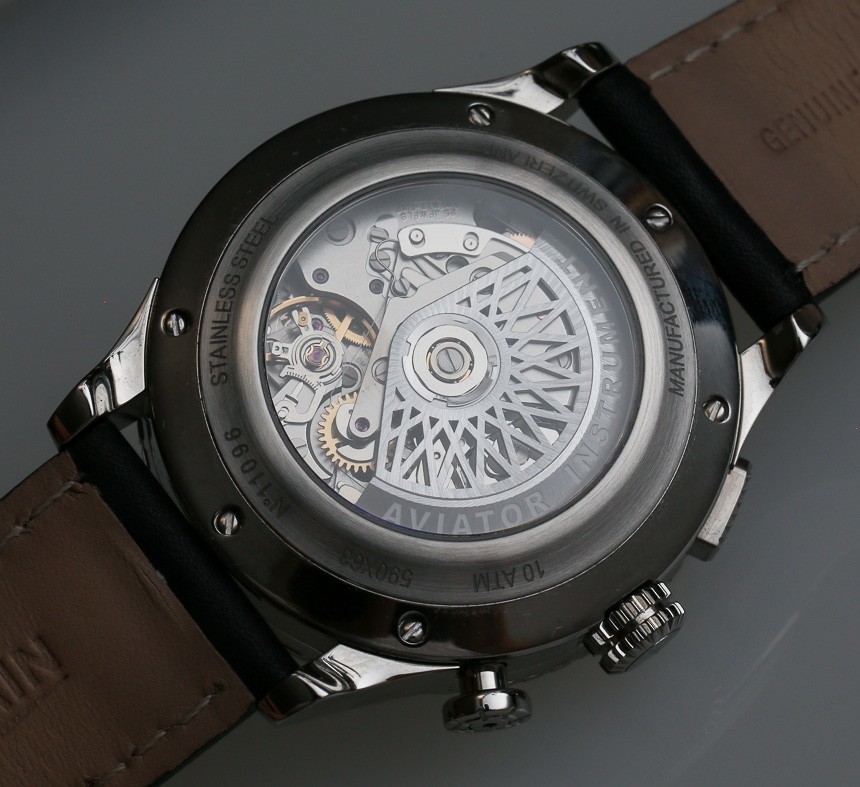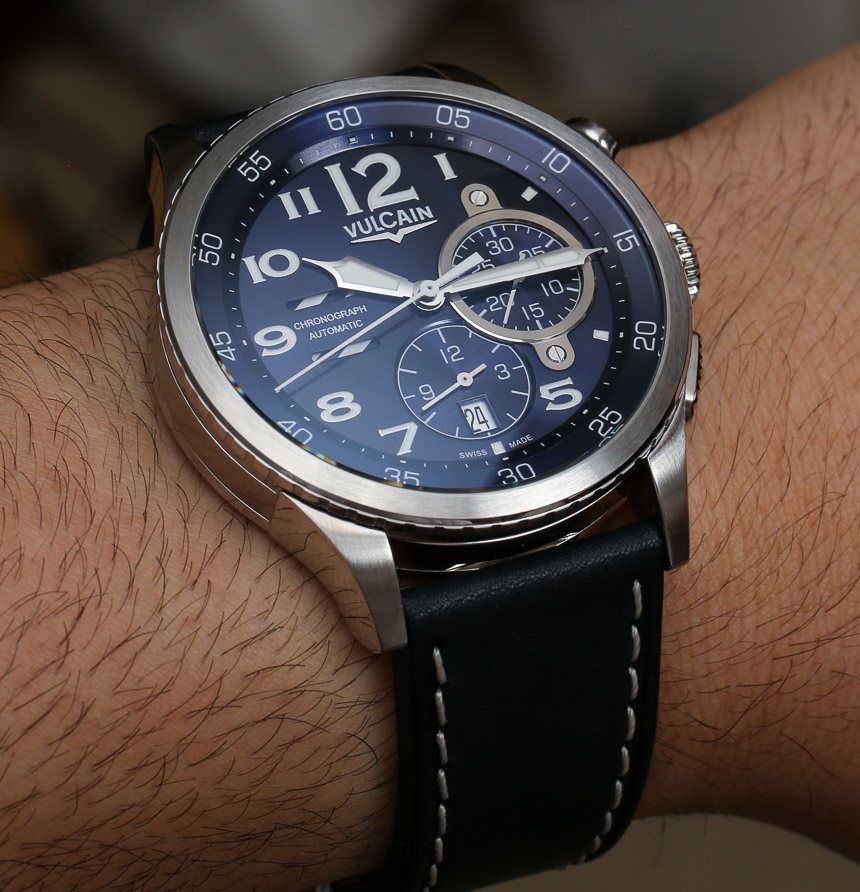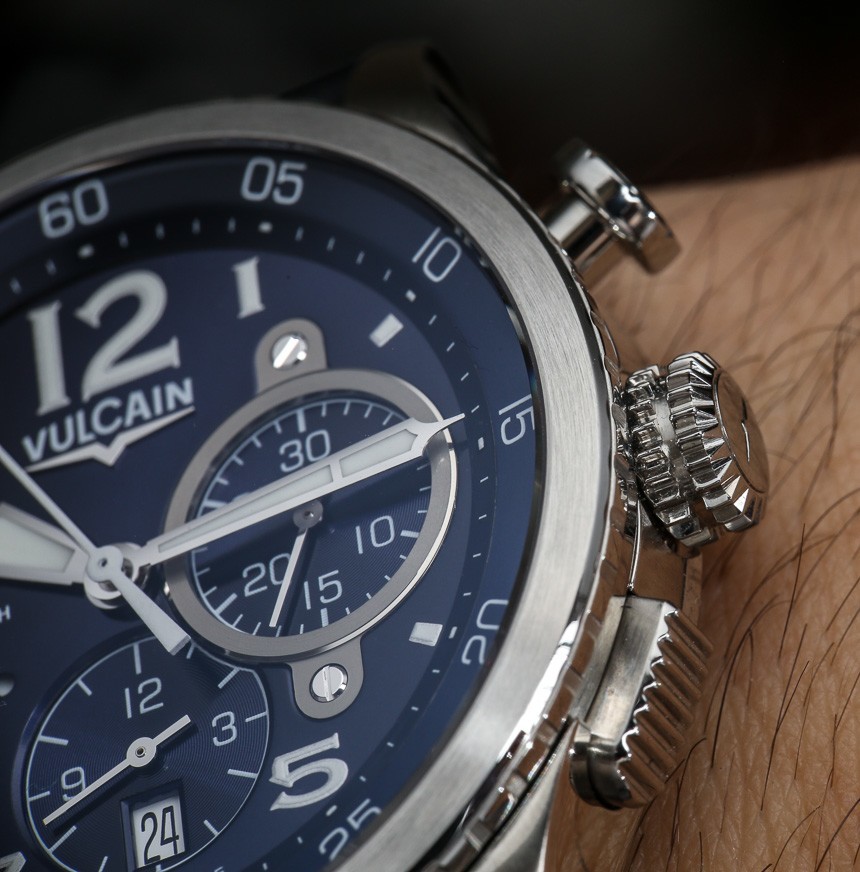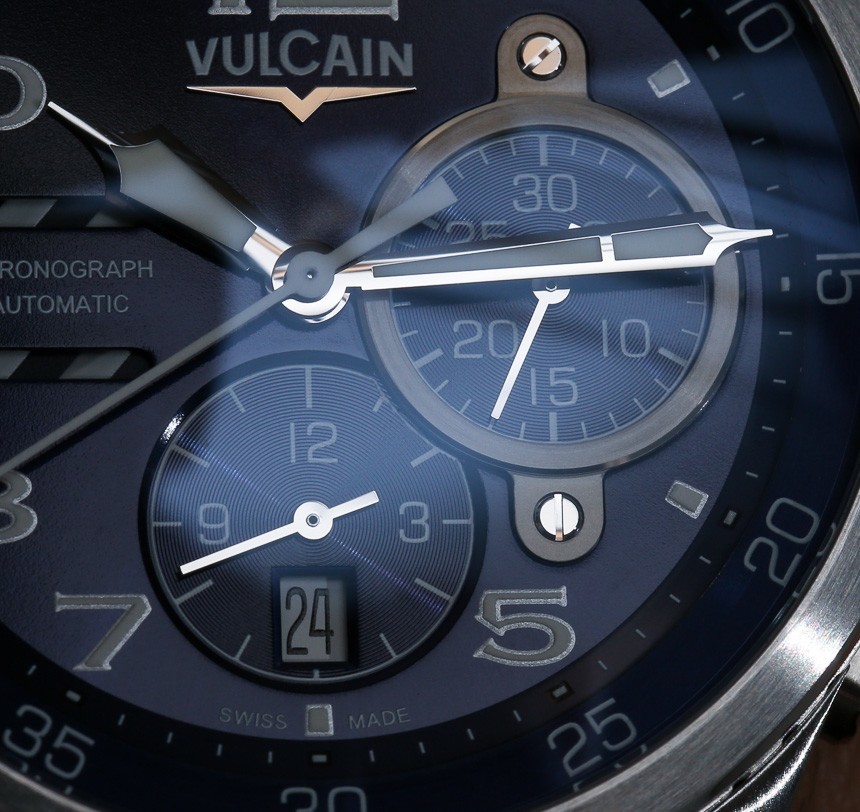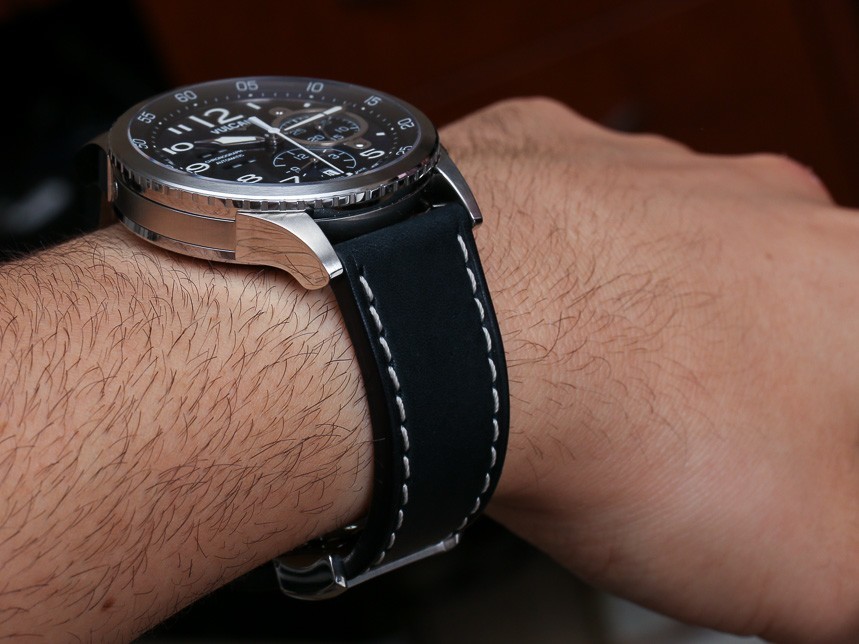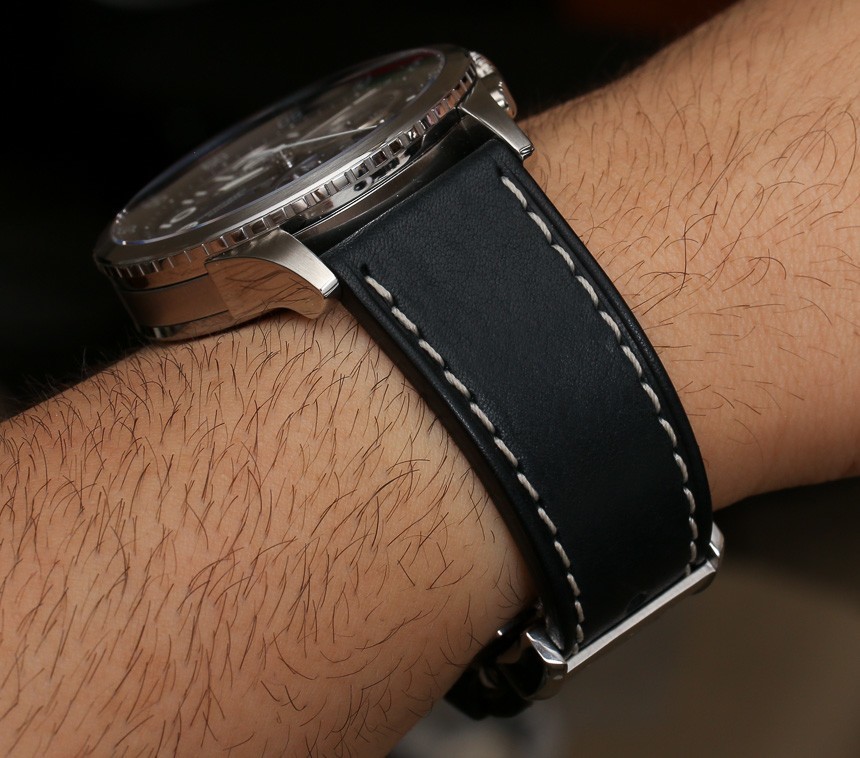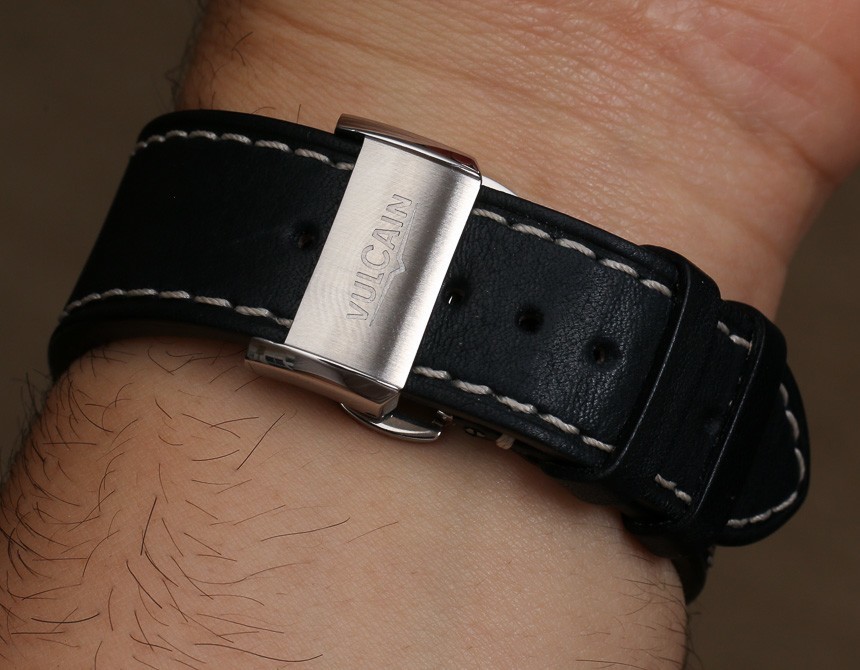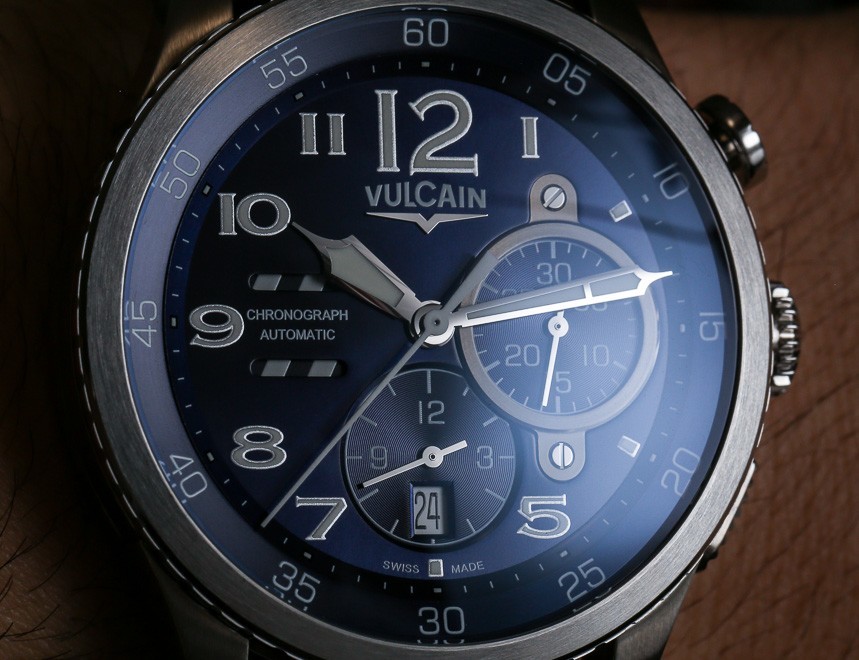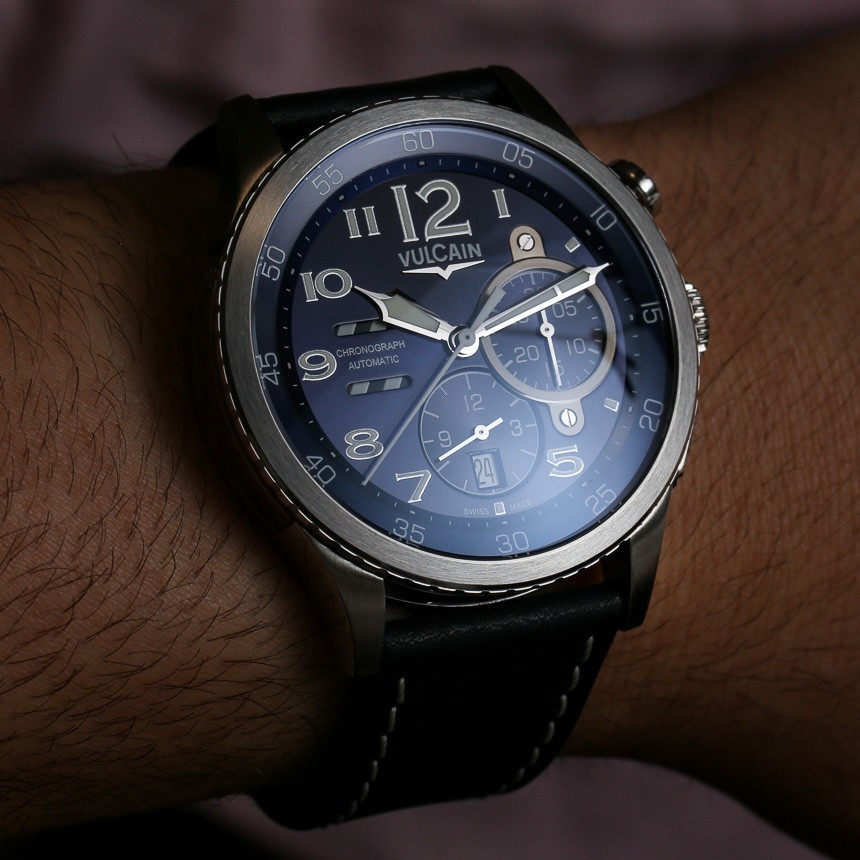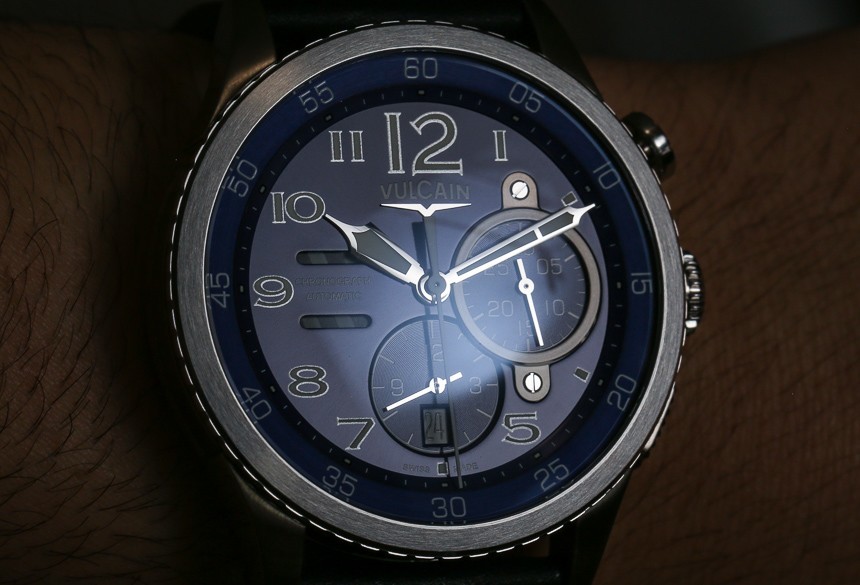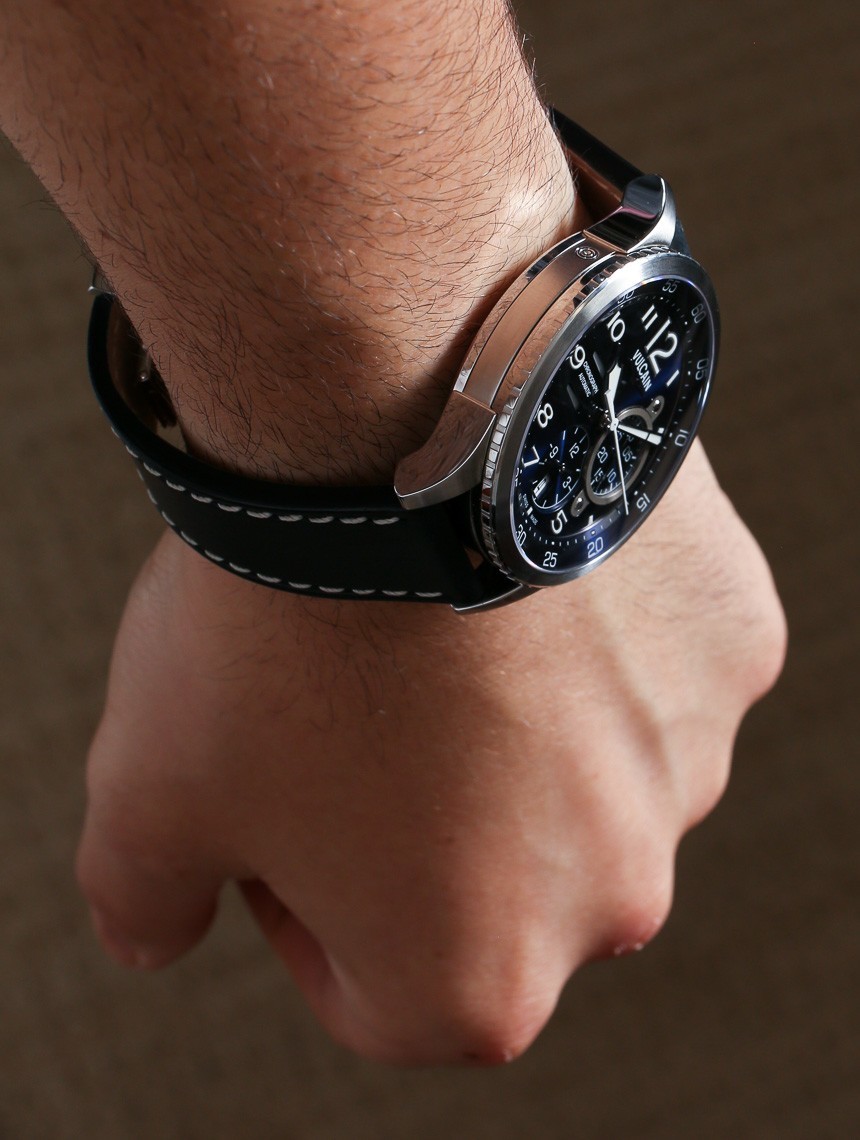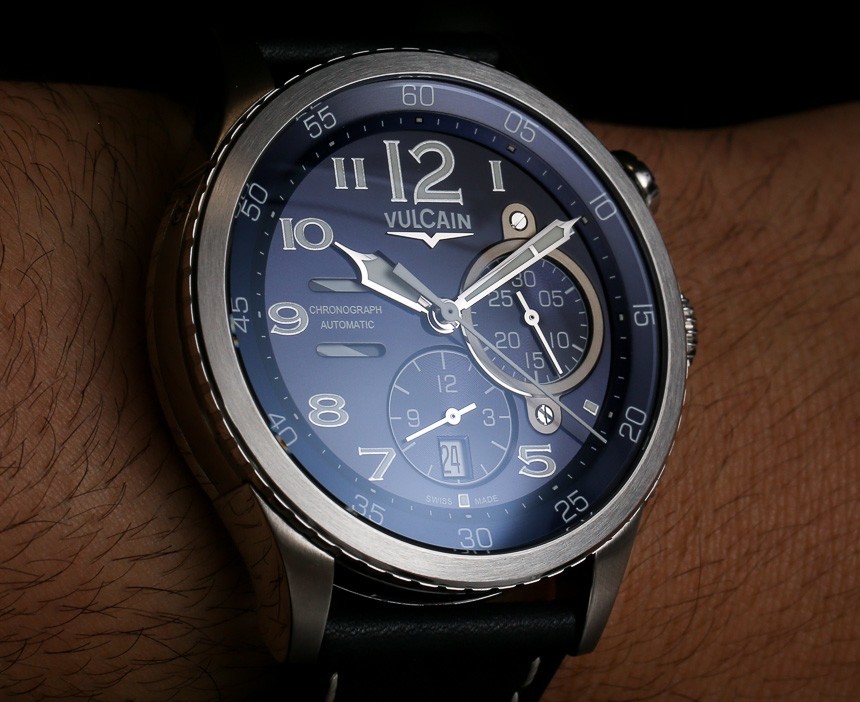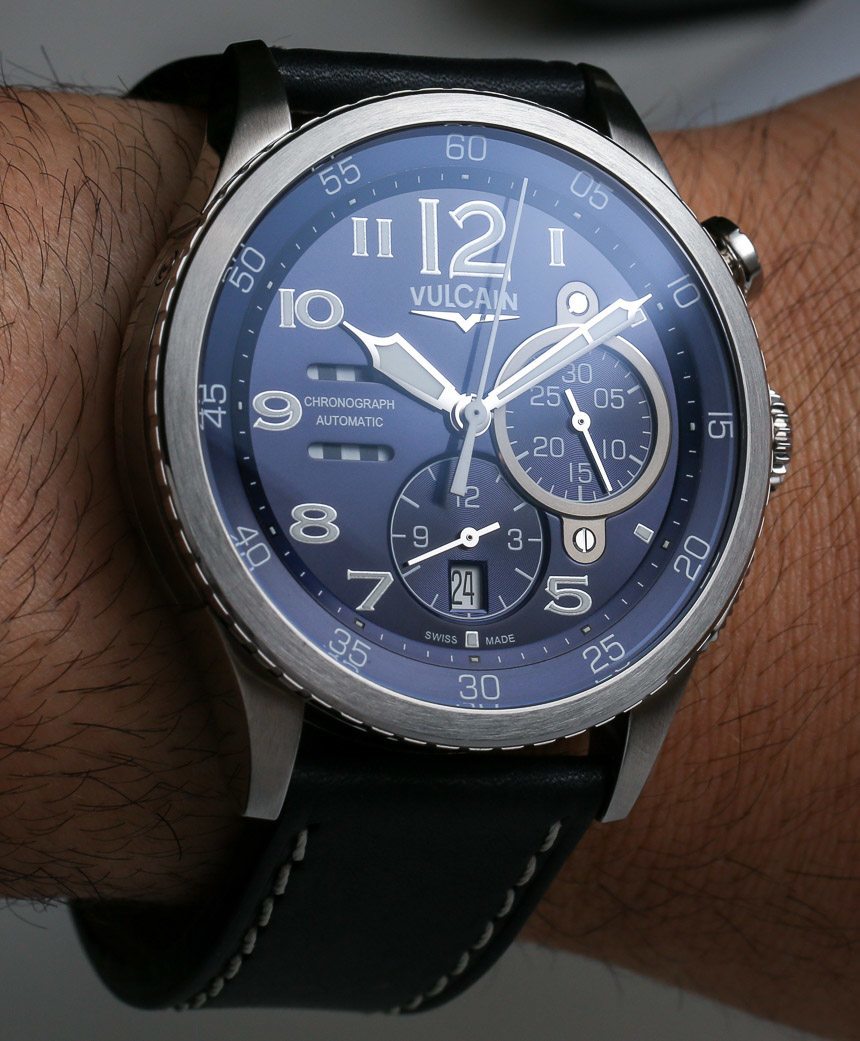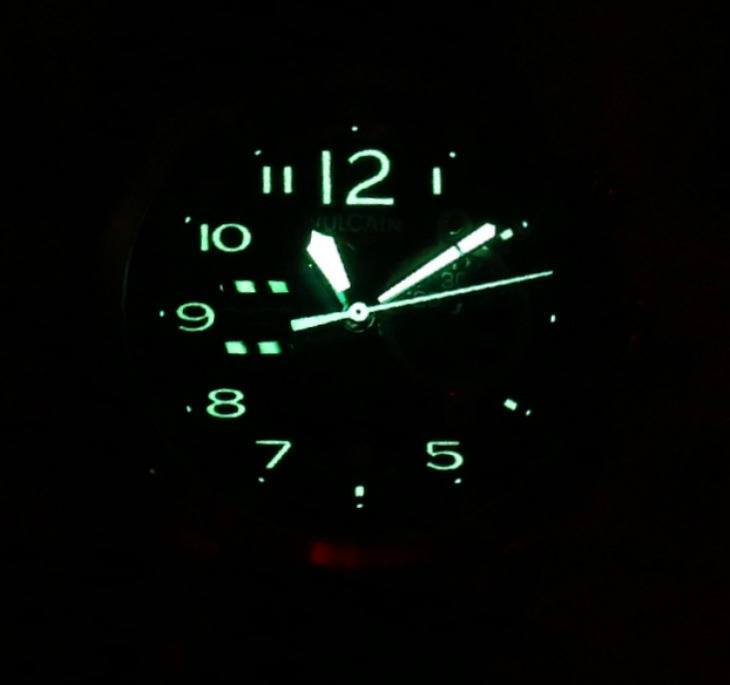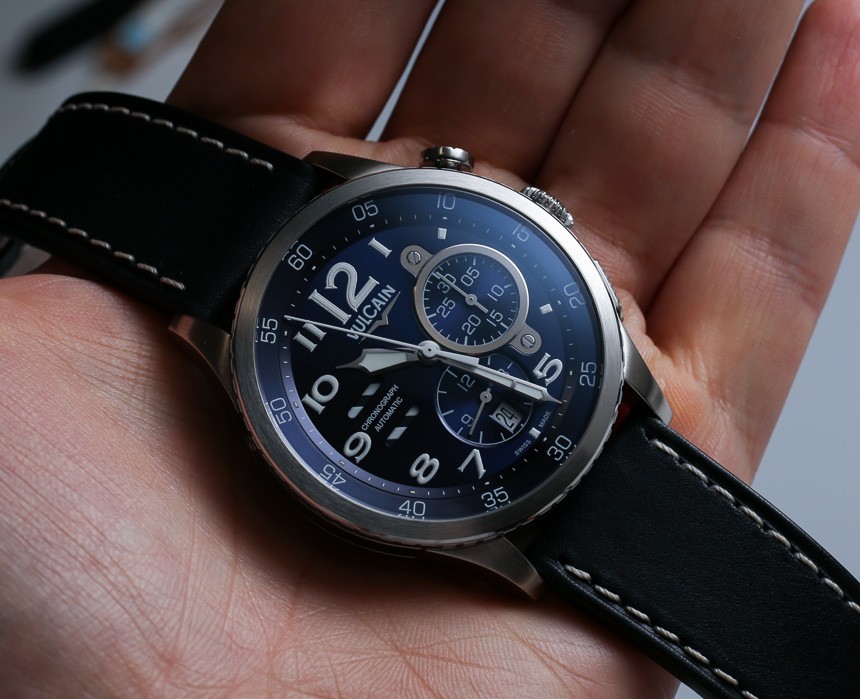
The play of asymmetry on the Vulcain Aviator Instrument really takes flight on the striking dial, which is busy but somehow works. I’m not usually a fan of multiple fonts on a dial (and I count around four here), but the readability here is surprisingly high considering. Once you familiarize yourself with the visual logic of the dial – an interesting, somewhat surprising variation on a tri-compax configuration – your eyes immediately know where to look.
The subdials bisect each other, with the date placed at the six position on the 12-hour counter; the thirty-second counter, meanwhile, is additionally set off by a not shy screwed-in steel frame. Each of these choices layers a new visual plane to the dial, evoking a sense of depth. But this timepiece’s most radical choice is also what makes it truly special: the seconds counter. Instead of adding another subdial at nine o’clock as expected, for the seconds counter Vulcain has placed two rows of diagonal blue-and-white stripes on top of each – one moving left to right, the other right to left, to indicate the seconds passing. It alternately resembles two barber poles lying on their sides, or something you’d find on the dash in a plane’s cockpit (in fact, it is allegedly an allusion to a flight instrument known as an “flag alarm”). It’s a stunning, startlingly abstract indicator of the passage of time – a sublime complication that proves hypnotic, continually pulling one’s eyes to the watch. It’s amazing how often I caught myself just gazing at it absentmindedly.
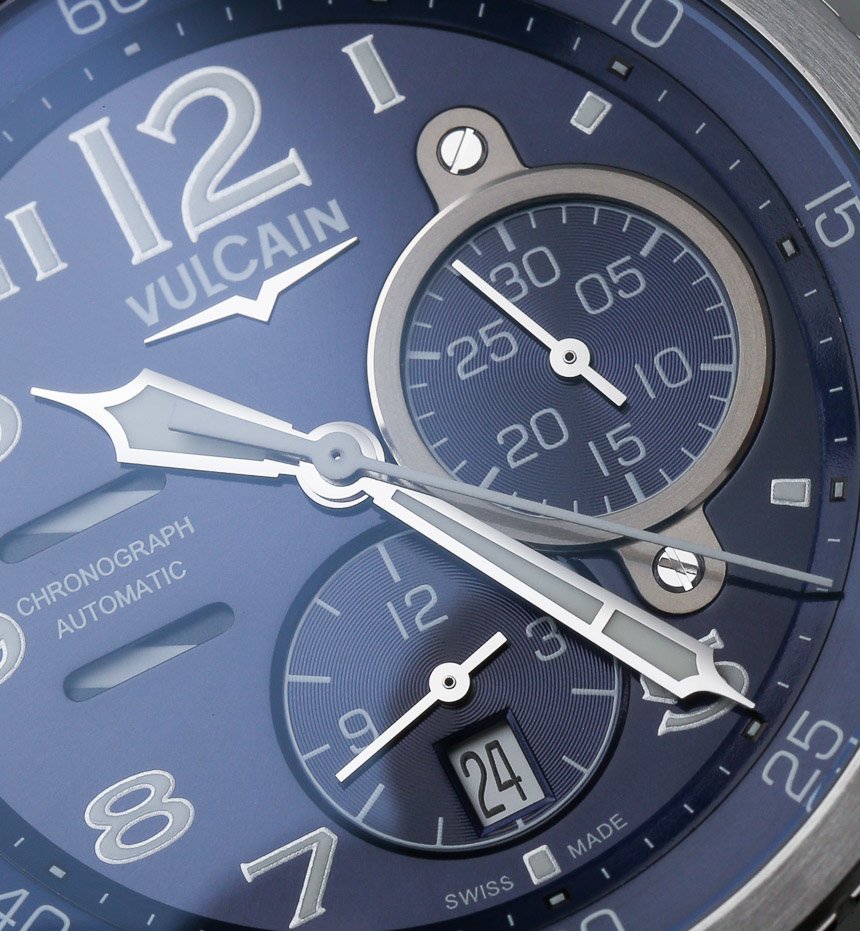
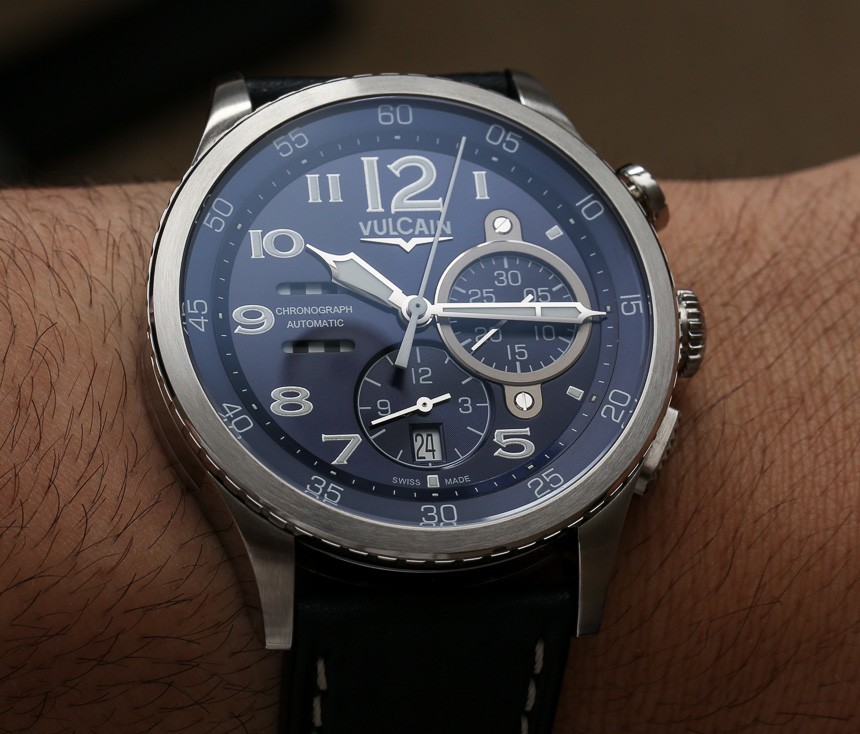
So where does Vulcain’s maiden voyage into pilot chronographs ultimately land in the hierarchy of similar watches? Well, the closest competitor would be perhaps the Graham Chronofighter II (mentioned above), which is also powered by 7750-based architecture and has a few close similarities (there are also some major differences, like the crown-protector on the left side of the case, and in my opinion a more brusque, less refined alpha-male design aesthetic). There are also the entry-level models in IWC’s pilot line – also ETA powered, but carrying with them a lot of aviation heritage. And for a solid watch in this category that also offers quirky, unexpected design choices, Bell & Ross’ Vintage BR 126 Insignia is a possibility.
However, with a sticker price around $4,350, the Vulcain Aviator Instrument is anywhere from $600 to $2,000 cheaper than any of those comparable options, making it something of a bargain – and a real contender. Ultimately, what appealed to me most about this watch was it includes most of the same features and complications of similar watches, but at a gentler price, with distinctive design elements that make it stand out in the wild against a plethora of Top Guns. That alone makes me consider taking a flyer on it. vulcain-watches.ch
Necessary Data
>Brand: Vulcain
>Model: Aviator Instrument Chronograph ref. 590163A37.BFC010
>Price: $4,350 USD
>Size: 44.6mm
>Would reviewer personally wear it: Absolutely.
>Friend we’d recommend it to first: Someone who wants a serious pilot’s watch that not every desk pilot is going to have.
>Best characteristic of watch: The undeniably compelling avant-garde seconds counter – the apex of the Aviator Instrument’s edgy yet coherent design aesthetic.
>Worst characteristic of watch: Largely unadorned movement is weirdly blah in contrast to the rest of the watch’s exciting risk taking.

